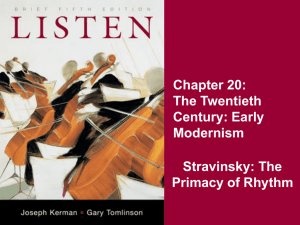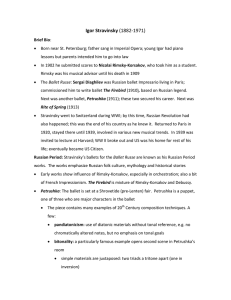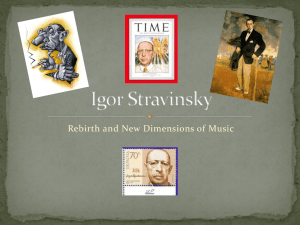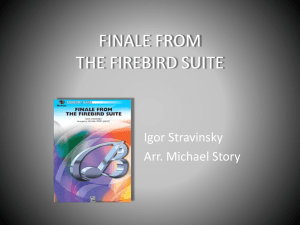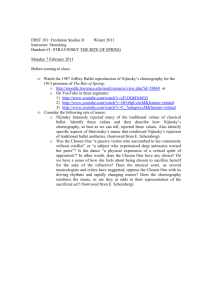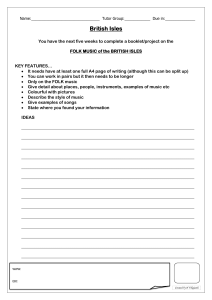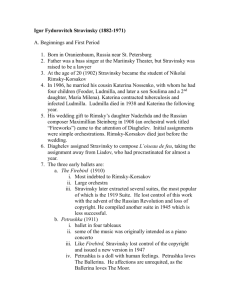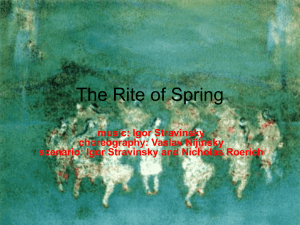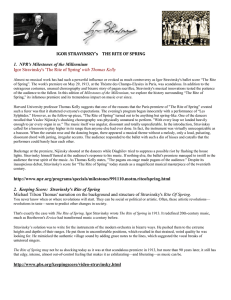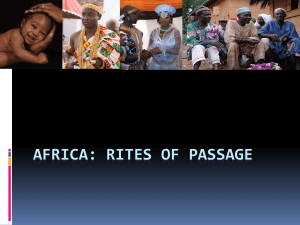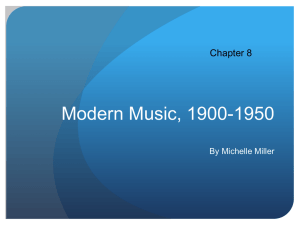Stravinsky
advertisement
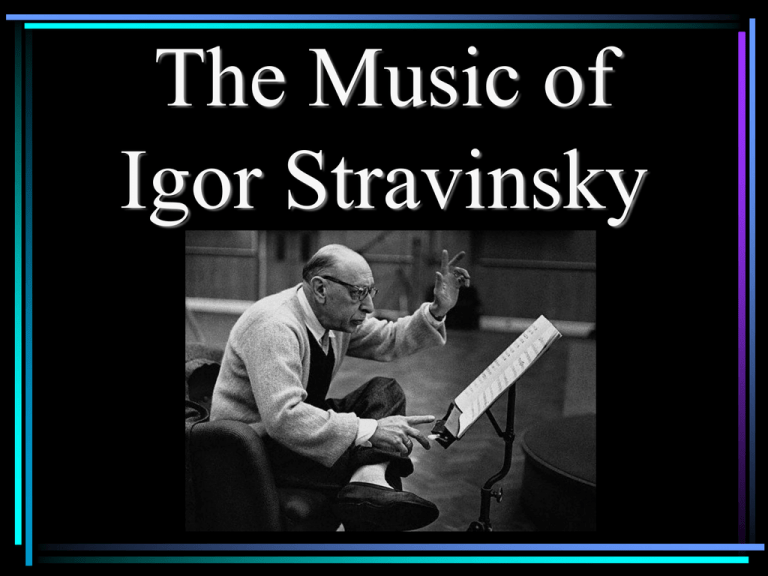
The Music of Igor Stravinsky Paris, May 1913 Rite Stravinsky: The Rite of Spring Stravinsky: The Rite of Spring Igor Stravinsky I. Stravinsky’s Sound Worlds & Influences A. Ballet Music (Petrushka) B. Music of Classical Pd. (Symphony in C) C. Russian Folk Music (The Wedding) D. Russian Orthodox Music (Credo, 1932) E. Schoenberg’s Serialism (Elegy for J. F. K.) F. Jazz/Popular Music (Russian Scherzo) II. Stravinsky I: Russian Period (1910-20) A. Stravinsky’s Dates 1882-1971 B. Musical Education w. Nicolai Rimsky-Korsakov •Russian Folk Elements (Nationalism) •Late Romantic Orchestration C. Serge Diaghilev and the Ballet Russé (1910-13) The Firebird/ Petrushka/The Rite of Spring •All 3 based on Russian Folk Tales •All 3 incorporate Russian Folk Melodies •All 3 use large Romantic-Style Orchestra D. The Firebird 1910 •Late Romanticism/Tonal Harmony •Innovation: Passages use Octatonic Scale Octatonic Scale: Alternates Whole Steps & ½ Steps c c# d# dc e f f# g# a# g a bc II. Russian Period (1910-20), cont. E. Petrushka (1911) •Began as Piano Concerto, but piano used percussively •Innovation: Frequent use of Polychords (Petrushka chord) F. The Rite of Spring (Le sacre du printemps, 1913) •Exploration of New Rhythmic Possibilities III. Stravinsky II: Neo-Classical Period (1920-1951) Modernism Classicism A. Social & Political Context •Russian elements recede/Smaller Performing Forces B. Pulcinella = Reworking of music by G. B. Pergolesi (early classical) C. Musical Characteristics of Neo-Classicism •Traditional Forms •Steady Pulse (often with repetitive rhythmic cells) •Smaller performing forces •Clear textures w. little doubling •Revived interest in imitation & counterpoint •Dissonance •Wind instruments favored over strings •Strident or percussive sonorities D. Important Neo-Classical Compositions •L’historie du soldat (A Soldier’s Tale) •Symphonies of Wind Instruments •Symphony of Psalms IV. Stravinsky (III): Serial Period (1951-1971) A. W.W. II = immigration to U. S. B. Robert Craft & Influence of Schoenberg’s Serialism. IV. The Rite of Spring A. Wright’s Rite •percussive orchestra •irregular accents •osinato figures •polymeters, polychords, polyrhythms B. The Critic’s Rite •rhythmically complex: either incomprehensible; or complex for the sake of complexity C. Stravinsky’s Rite 1. Beats divided irregularly 2. Many rhythmically complex layers 3. Patterns presented both “horizontally” and “vertically” 4. Regular beats, but irregular (or mixed) meter 5. Polychords (two different “normal” chords sound together) 6. Rhythmic cells in irregular/asymmetrical patterns q q ee q
